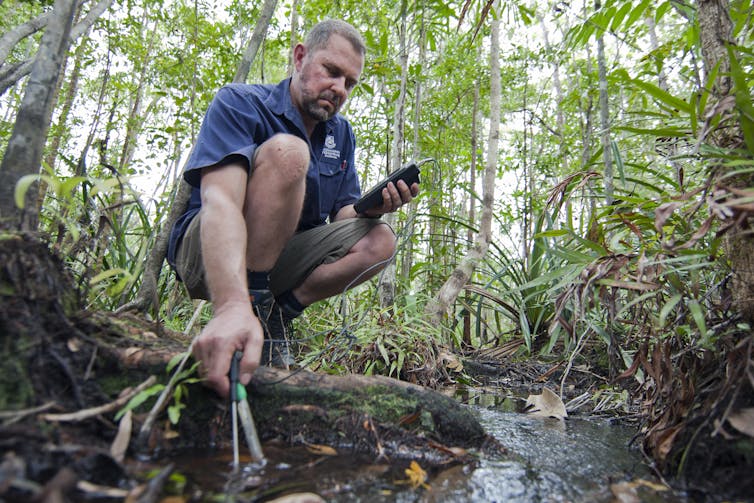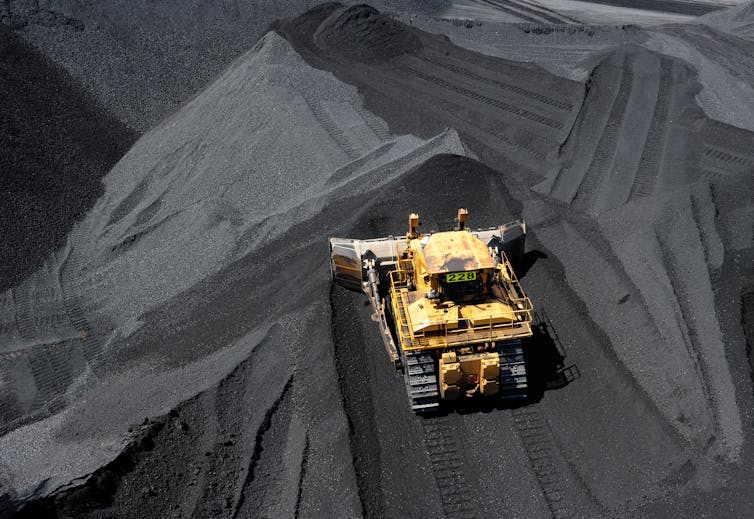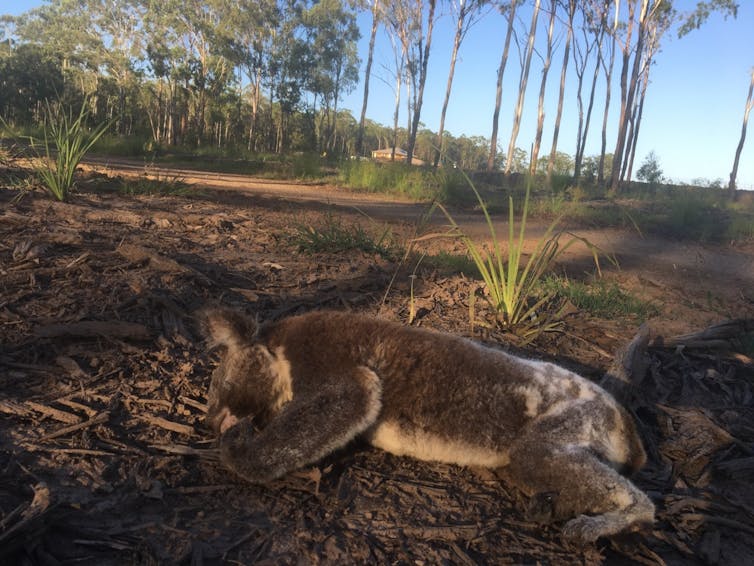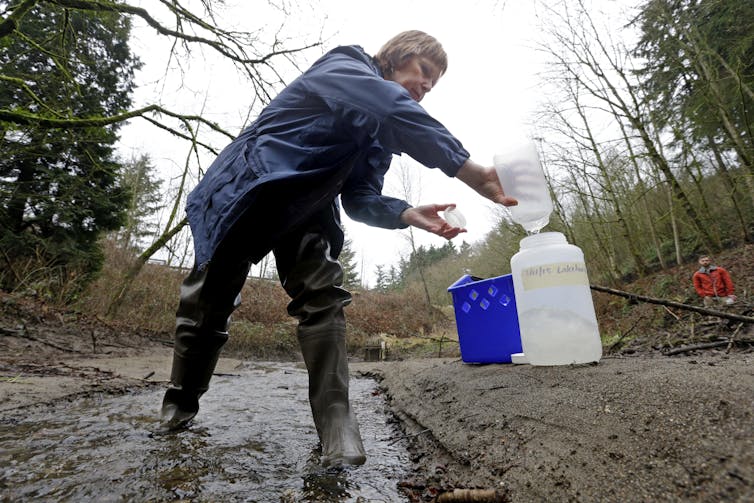Ecologists and conservation experts in government, industry and universities are routinely constrained in communicating scientific evidence on threatened species, mining, logging and other threats to the environment, new research has found.
The study, , shows how important scientific information about environmental threats often does not reach the public or decision-makers, including government ministers.
In some cases, scientists self-censor information for fear of damaging their careers, losing funding or being misrepresented in the media. In others, senior managers or ministers’ officers prevented researchers from speaking truthfully on scientific matters.
This information blackout, termed “science suppression”, can hide environmentally damaging practices and policies from public scrutiny. The practice is detrimental to both nature and democracy.

Code of silence
The online survey ran from 25 October, 2018, to 11 February, 2019. Through advertising and other means, we targeted Australian ecologists, conservation scientists, conservation policy makers and environmental consultants. This included academics, government employees and scientists working for industry such as consultants and non-government organisations.
Some 220 people responded to the survey, comprising:
- 88 working in universities
- 79 working in local, state or federal government
- 47 working in industry, such as environmental consulting and environmental NGOs
- 6 who could not be classified.
In a series of multiple-choice and open-ended questions, we asked respondents about the prevalence and consequences of suppressing science communication.
About half (52 per cent) of government respondents, 38 per cent from industry and 9 per cent from universities had been prohibited from communicating scientific information.
Communications via traditional (40 per cent) and social (25 per cent) media were most commonly prohibited across all workplaces. There were also instances of internal communications (15 per cent), conference presentations (11 per cent) and journal papers (5 per cent) being prohibited.
‘Ministers are not receiving full information’
Some 75 per cent of respondents reported having refrained from making a contribution to public discussion when given the opportunity – most commonly in traditional media or social media. A small number of respondents self-censored conference presentations (9 per cent) and peer-reviewed papers (7 per cent).
Factors constraining commentary from government respondents included senior management (82 per cent), workplace policy (72 per cent), a minister’s office (63 per cent) and middle management (62 per cent).
Fear of barriers to advancement (49 per cent) and concern about media misrepresentation (49 per cent) also discouraged public communication by government respondents.
Almost 60 per cent of government respondents and 36 per cent of industry respondents reported unduly modified internal communications.
"Due to ‘risk management’ in the public sector […] ministers are not receiving full information and advice and/or this is being ‘massaged’ by advisors," one government respondent said.
University respondents, more than other workplaces, avoided public commentary out of fear of how they would be represented by the media (76 per cent), fear of being drawn beyond their expertise (73 per cent), stress (55 per cent), fear that funding might be affected (53%) and uncertainty about their area of expertise (52 per cent).
"I proposed an article in The Conversation about the impacts of mining […] The uni I worked at didn’t like the idea as they received funding from (the mining company)," one university respondent said.

Critical conservation issues suppressed
Information suppression was most common on the issue of threatened species. Around half of industry and government respondents, and 28 per cent of university respondents, said their commentary on the topic was constrained.
Government respondents also reported being constrained in commenting on logging and climate change.
One government respondent said: "We are often forbidden (from) talking about the true impacts of, say, a threatening process […] especially if the government is doing little to mitigate the threat […] In this way the public often remains ‘in the dark’ about the true state and trends of many species."
University respondents were most commonly constrained in talking about feral animals.
A university respondent said: "By being blocked from reporting on the dodgy dealings of my university with regards to my research and its outcomes I feel like I’m not doing my job properly. The university actively avoids any mention of my study species or project due to vested financial interests in some key habitat."
Industry respondents, more than those from other sectors, were constrained in commenting on the impacts of mining, urban development and native vegetation clearing.
One industry respondent said: "A project […] clearly had unacceptable impacts on a critically endangered species […] the approvals process ignored these impacts […] Not being able to speak out meant that no one in the process was willing or able to advocate for conservation or make the public aware of the problem."

Consequences of constraints on public commentary
Of those respondents who had communicated information publicly, 42% had been harassed or criticised for doing so. Of those, 83 per cent believed the harassers were motivated by political or economic interests.
Some 77 respondents answered a question on whether they had suffered personal consequences as a result of suppressing information. Of these, 18 per cent said they had suffered mental health effects. And 21 per cent reported increased job insecurity, damage to their career, job loss, or had left the field.
One respondent said: "I declared the (action) unsafe to proceed. I was overruled and properties and assets were impacted. I was told to be silent or never have a job again."
Another said: "As a consultant working for companies that damage the environment, you have to believe you are having a positive impact, but after years of observing how broken the system is, not being legally able to speak out becomes harder to deal with."

Change is needed
We acknowledge that we receive grants involving contracts that restrict our academic freedom. And some of us self-censor to avoid risks to grants from government, resulting in personal moral conflict and a less informed public. When starting this research project, one of our colleagues declined to contribute for fear of losing funding and risking employment.
But Australia faces many complex and demanding environmental problems. It’s essential that scientists are free to communicate their knowledge on these issues.
Public servant codes of conduct should be revised to allow government scientists to speak freely about their research in both a public and private capacity. And government scientists and other staff should report to new, independent state and federal environment authorities, to minimise political and industry interference.
A free flow of information ensures government policy is backed by the best science. Conservation dollars would be more wisely invested, costly mistakes avoided and interventions more effectively targeted.
And importantly, it would help ensure the public is properly informed – a fundamental tenet of a flourishing democracy. Don Driscoll receives funding from the Herman Slade Foundation, OEH NSW Environmental Grants program, DELWP Vic, National Geographic, Rufford Foundation, WWF and Bushfire and Natural Hazards CRC. He is Past President of the Ecological Society of Australia, Director of the Centre of Integrative Ecology and Director of the TechnEcology Research Network at Deakin University. Don is a member of the Ecological Society of Australia and Society for Conservation Biology. The research reported here was undertaken for the Ecological Society of Australia
Don Driscoll receives funding from the Herman Slade Foundation, OEH NSW Environmental Grants program, DELWP Vic, National Geographic, Rufford Foundation, WWF and Bushfire and Natural Hazards CRC. He is Past President of the Ecological Society of Australia, Director of the Centre of Integrative Ecology and Director of the TechnEcology Research Network at Deakin University. Don is a member of the Ecological Society of Australia and Society for Conservation Biology. The research reported here was undertaken for the Ecological Society of Australia
Euan Ritchie receives funding from the Australian Research Council, The Australia and Pacific Science Foundation, Australian Geographic, Parks Victoria, Department of Environment, Land, Water and Planning, and the Bushfire and Natural Hazards CRC. Euan Ritchie is a Director (Media Working Group) of the Ecological Society of Australia, and a member of the Australian Mammal Society.
Noel Preece is an independent environmental consultant, Adj. Associate Professor at James Cook University, University Fellow at Charles Darwin University and Councillor on the Ecosystem Science Council. Noel is active on several Working Groups of the Ecological Society of Australia. He is also undertaking research on forest restoration and on biodiversity declines in northern Australia, and works with Indigenous land management groups in northern Australia.
Bob Pressey does not work for, consult, own shares in or receive funding from any company or organisation that would benefit from this article, and has disclosed no relevant affiliations beyond their academic appointment.




